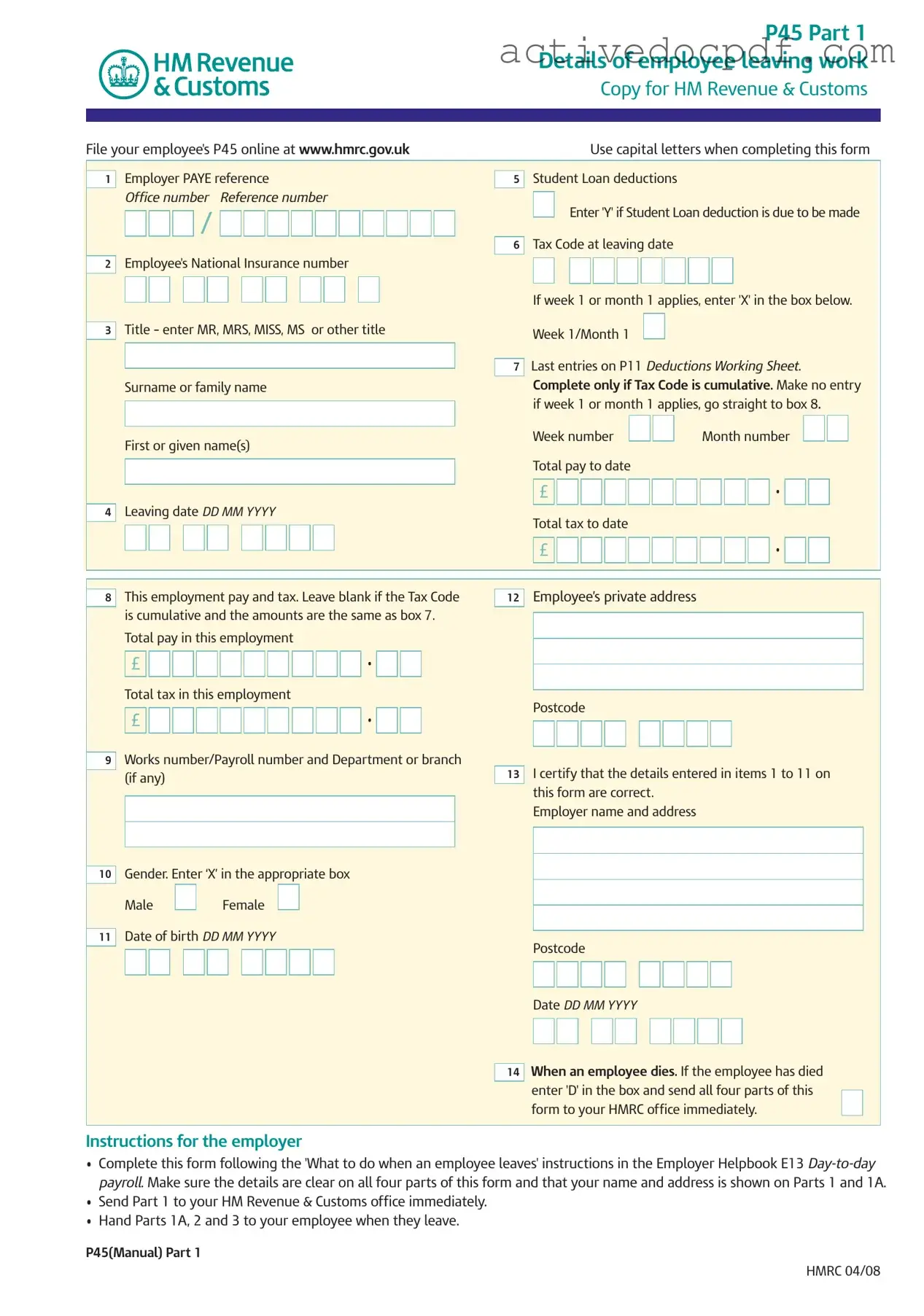Free P 45 It PDF Form
The P45 form is an essential document used in the UK to detail an employee's earnings and tax contributions upon leaving a job. This form is divided into several parts, providing crucial information for both the employee and the new employer. Understanding the P45 can simplify the transition to new employment and ensure that tax matters are handled correctly.
Edit Form Online
